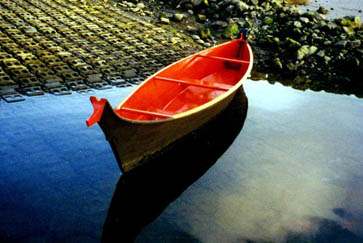Grey whale watching on Washington’s coast?
For a long while I’ve been trying to locate a guy who is trying to use traditional Northwest canoes as a vehicle for watching grey whales as they migrate along the outer coast of Washington. Tonight I finally found news of Fred Woodruff after reading about him years ago in Brenda Peterson’s Sightings.
 |
Brenda was intrigued with the counterpoint of the Makah’s decision to hunt grey whales and the Quileute’s decision to watch whales (despite their Treaty right to hunt). While I am awed by the Makah’s sea-going prowess, their hunting culture and artifacts, on my visits to maintain the hydrophone in Neah Bay it’s clear that further boosting tourism in Neah Bay would be welcome. I know I’d pay good money to help paddle a canoe out into the Pacific, and I’d pay even more if there was a chance I’d see (or hear) some whales, too. Here’s hoping Fred or similar innovators can give me such opportunities.
From Earth Island: The Quileute Tribe
The Quileute Tribe is a small, federally recognized nation of 800 enrolled members, whose 900 square miles of ancestral lands include the Pacific Slopes of the Olympic Peninsula and the watersheds of the Sol Doc, Bogachiel, Calawah and Dickey rivers.
With the loss of the great natural abundance that once sustained the Quileute, seasonal tourism has come to constitute a significant portion of the tribe’s economy. Unlike the nearby Makah, who are profiting from whale hunting, the Quileute are proponents of whale watching.
In the past 13 years, members of the Quileute’s tribally owned Northwest Native Adventures have paddled more than 4,000 miles by ocean-going cedar canoe. Canoe leader Fred Woodruff’s stories and songs have entranced hundreds of visitors who have ventured into the Pacific to watch the migration of Pacific gray whales. Fred’s tours have hosted youth, the elderly, and on one occasion, a boatload of Tibetan monks.
But the tribe needed a larger canoe capable of carrying 12 to 15 passengers. The Quileute now have their new canoe – Kwa-dee Tabil (“Little Boat”) – a perfect replica of the traditional Quileute cedar dugout. Construction of Kwa-dee Tabil (beautifully handcrafted out of plywood by John McCallum of Applegate Boatworks) was made possible with a $3,800 grant from the International Marine Mammal Project. The grant was given in support of the Quileute’s devotion to whales and Woodruff’s dream of “putting back in place” a little of what humans have taken from the bounty of the Pacific Northwest.
For information on arranging a sea-going canoe excursion, contact the Quileute Tribal Council [PO Box 279, La Push, Washington 98350-0279, (360) 374-6163].From Applegate Boatworks:Tabil – A plywood replica of a Quileute canoe.LOA = 18′ 6″ – LWL = 16′ 4″ – Beam = 3’5″ – Hull Depth = 16″ – Wt = 180 lbs
This is the first replica canoe that I made for an Indian tribe. Fred Woodruff and the Quileute Tribal School at La Push Washington asked me to build this canoe in 2000. Tabil is the Quileute word for canoe. ( Pronounced “ta BALE” ) Fred is in command of the big 33 ft. Quileute cedar dugout “Os·Chuck·a·Bic” ( Pronounced “os CHA bic”). This design is a direct adaptation of a 25 ft Quileute canoe carved in 1928 by Conrad Williams at La Push. The lines were taken by Bill Durham in 1965 and printed in Leslie Lincoln’s book Coast Salish Canoes. The canoe was built with the taped-seam plywood method. This is the first time I used an extra thick bottom plank to duplicate the weight distribution of a real cedar dugout. The results are very satisfying. Tabil’s performance is similar to the traditional dugout’s. The resistance to rolling is rather small in the first 5 or 10 degrees and then rises rapidly at larger angles. Paradoxicly this low initial stability is a good thing. A raft has high initial stability but it jerks back and forth with each little wave. A traditional West Coast canoe does not tire out the crew by this kind of snappy response to small waves. The low center of gravity and the wide flaring sides ensure plenty of stability when the canoe rolls way over. They call this “the catch”. Fred told me that this canoe dances on the waves. This canoe is now at the Quileute reservation at La Push.





 Twitter
Twitter LinkedIn
LinkedIn Facebook
Facebook